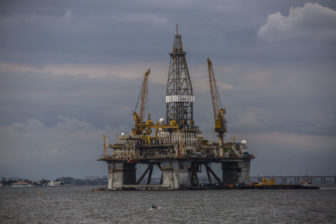As governments in Latin America scramble to deal with the fall-out of COVID-19, renewable energy should be top of mind as a possible pathway to economic recovery.
Clean energy is increasingly viewed not just as a way to reduce pollution, but as a means to improve public health and hedge against future climate risks and stranded assets. That idea has gained additional resonance in light of the pandemic, and the region is particularly well-positioned to leverage the renewable industry as a source of new jobs and investment. But to succeed, governments will need to be proactive – and move quickly.
According to the International Renewable Energy Agency (IRENA), many of the top markets for investment in renewable energy are located in Latin America. The U.S. Department of Commerce, for example, previously ranked Brazil, Chile and Mexico among the top markets in the world for U.S. firms and exporters of renewable energy and energy efficiency technologies.
Meanwhile, the pandemic has accelerated an increased sustainability focus from policymakers and investors, as the downside risks of traditional energy supplies become more evident. Chilean institutional investors and the Santiago Stock Exchange, for example, have already begun to consider the principles laid out by the Task Force on Climate-related Financial Disclosures (TCFD), an initiative started in 2015 by the Financial Stability Board to enhance private-sector reporting on exposure to climate-based financial risks. Earlier this year the World Economic Forum’s Global Risk Report ranked climate change and other related environmental issues as a top global risk – the first time in the survey’s history that the environment figured so prominently.
But Latin America has yet to make good on its potential. Recent regulatory roadblocks in Mexico for example, could negatively affect renewable energy projects worth $6.4 billion, supported in large part by foreign investors. European countries such as France and Germany have consolidated behind a “green recovery roadmap” in light of COVID-19. However, stimulus packages in the region, such as in Chile, Colombia, Mexico and elsewhere, have focused on strengthening fragile healthcare systems and directing aid to the most vulnerable segments of the population.
While staying connected to this reality is important, a longer-term economic recovery should place a greater emphasis on the role of renewable energy. A recent IRENA report detailed how massive investments in the renewable energy sector could unleash significant growth over the course of the next three decades, by returning between $3 and $8 on every dollar invested. Not only would the potential return on investment be good, but the labor market would also benefit, with estimates suggesting the total number of jobs in the sector could quadruple globally.
For the region, this would mean 3.2 million jobs, nearly 8% of the projected total under a green energy transformation. Further investments in energy efficiency, storage, and electrifying the transportation sector, all linked to establishing a cleaner energy system, could also have additional benefits for the Latin American job market. To get there, however, policies will need to support and incentivize a clean energy revolution by engaging diverse stakeholders and then uniting behind a common vision.
Indeed, medium-and-long-term investments for renewable energy projects were already likely to become increasingly more common this decade. With an initial push from Colombia last fall, a coalition of Latin American and Caribbean countries pledged a target of 70% renewable energy use by 2030. The pledge was followed by the U.N. Conference on Climate Change in Madrid in December, where members of the Chilean Renewable Energy Association (ACERA) signed a cooperative agreement with 12 other energy associations from Latin America and Spain.
ACERA, the largest business association for renewable technologies in Chile, plans to coordinate efforts through the Iberoamerican Alliance for Renewable Energy with eight other countries, promoting sustainability and decarbonization efforts in the electricity sector with partners in Argentina, Brazil, Colombia, Ecuador, Mexico, Peru, and Uruguay. This type of public-private partnership has tremendous buy-in across governments in the region, but it also needs backing in the form of finance from multilateral banks and U.S. investment firms.
All of this reflects the fact that the world’s energy plans are changing rapidly, and that now is the time for Latin America to double down on its clean energy goals. For the first time on record, renewable power generation in the U.S. could surpass electricity generated by coal. This shows that for many economies, particularly those in the developing world, the dependence on electricity generated from dirtier sources of energy may not be the end-all solution for reaching economic development.
The benefits of acting quickly are clear. Cost-competitive and resilient renewable energy systems, such as solar and wind, are becoming feasible much more quickly than was previously forecast, as the effects of the pandemic play-out. As global supply chains become disjointed or disrupted, vulnerabilities in strategic sectors of the economy can have profound impacts on national security. Renewable energy, alongside innovative ways of redesigning utilities and integrating big data through smart technologies, can help to lessen potential supply disruptions and systemic threats to infrastructure.
International financial institutions and investment firms are also playing a significant role, alongside the Federal Reserve and U.S. Treasury, to help reassure U.S. and global markets that amid all the coronavirus uncertainties, important monetary and fiscal tools remain available. A similar coordinated response may become necessary in addressing the financial aspects of climate change, by helping to direct greater investment to clean energy technologies. Large investment firms such as BlackRock have signaled more interest in understanding the financial risks associated with climate change. The firm’s chief executive, Laurence Fink, stated in his annual letter this year that the company would no longer invest in areas that represent a “sustainability-related risk.” The firm has in some ways become a major proponent of the TCFD, pushing to measure climate-risks more effectively in its portfolio.
Latin America is likely to face a long, tough road ahead, with already indebted countries exposed to higher levels of instability and social unrest. Yet, despite current disruptions to supply chains, the networks exist in the region to bring major players to the table, harnessing knowledge and the power of markets to guide growth by means of a sustainable energy transition. Not doing so will only expose greater vulnerabilities to climate risks and eventual stranded assets, with cleaner, cheaper sources of energy becoming a missed opportunity.
—
Raineri is a former Chilean minister of energy, senior advisor to AUI, Inc., and a professor at the Pontificia Universidad Católica de Chile. García Palma is the founder and executive director of ImplementaSur, a climate risk-consulting firm based in Santiago, Chile. Beal is a program associate in the Wilson Center’s Latin American Program.The views expressed are those of the authors.








